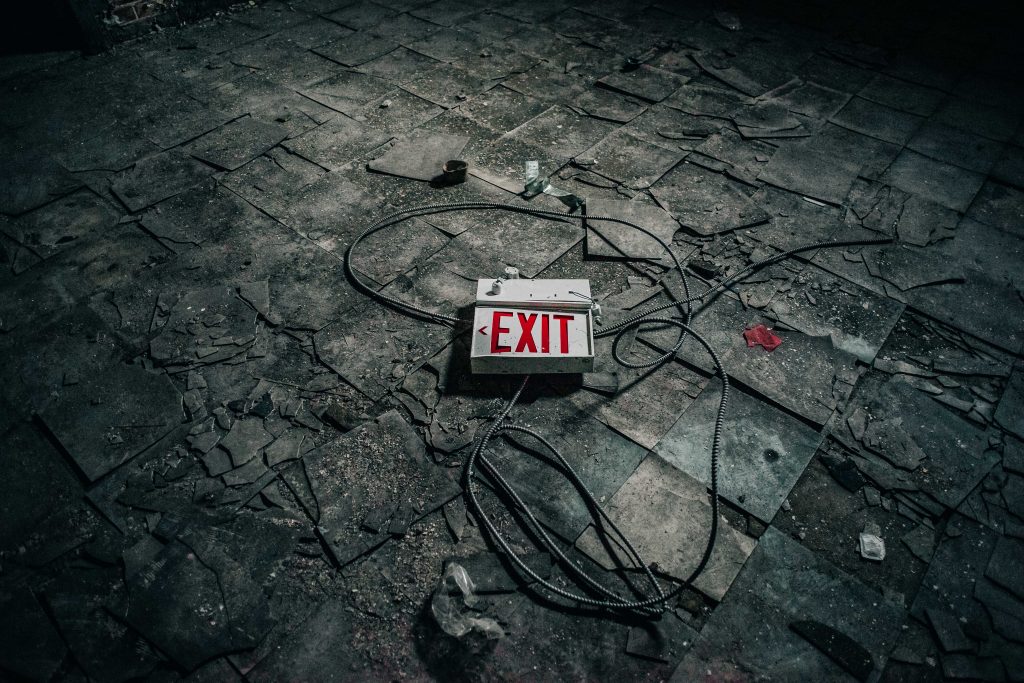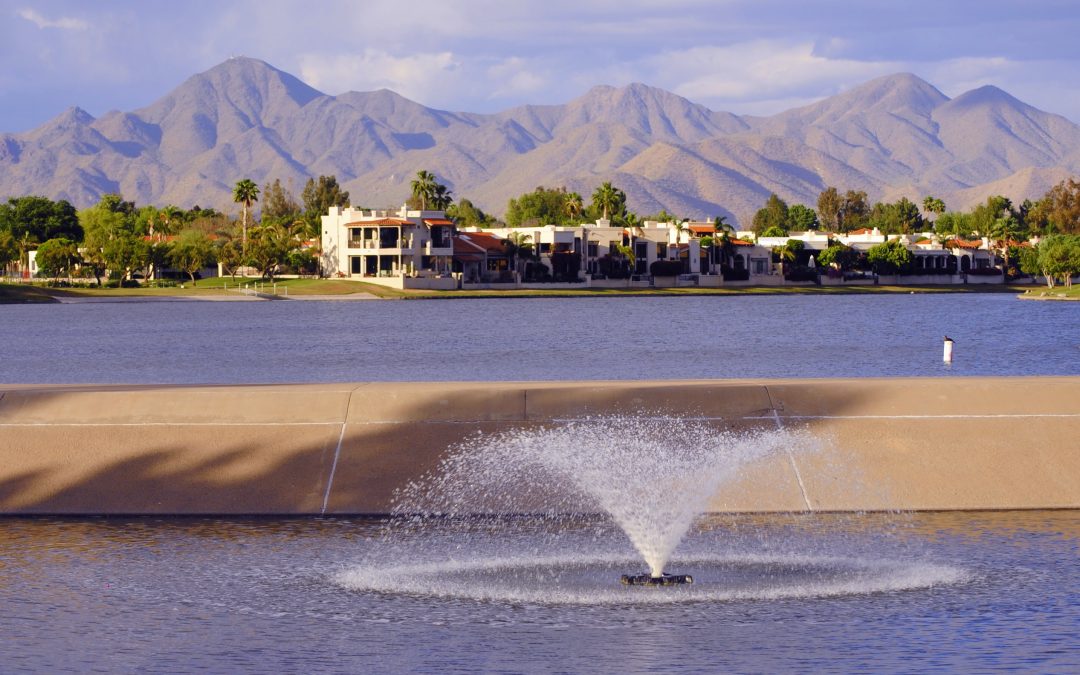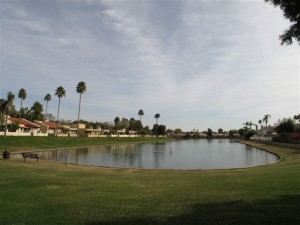by Paul Slaybaugh | May 29, 2009 | Home Buying, Scottsdale Real Estate
So I’m enjoying one of the myriad HGTV Real Estate shows the other night. First time home buyers were the focus of this particular program. Unable to watch without properly entertaining myself with my own sarcastic commentary (did that agent really just say that?), this has become one of my favorite pastimes.
There is the Realtor who feels the need to point out the backyard or the front door to the dumbfounded buyers. The agent who demands to know “if this is a house you can see yourself living in” within seconds of stepping through the front door. It’s a carnival of overselling that I can only hope has more to do with the camera than the standard practices of my erstwhile colleagues.
There is one particular practice that repeats itself ad nauseam on these shows, though, that truly makes my blood boil. I’m speaking of the agents who seemingly forget that their job description as a buyer’s agent is to protect the interest of their clients. It’s awfully hard to do that portion of the job correctly when you push every property that you look at as the greatest thing since canned yams.
Homes have flaws and some are fatal. While it is ultimately the burden of the consumer to make that determination, these silly shows raise my ire when the response to the buyer’s observation that there is a train running through the back yard is, “Hmm, let’s go back inside and look at that wonderful kitchen again!”
Or my personal favorite brand of exchange:
Buyer: “This only has 2 bedrooms? We need at least 3.”
Agent: “Yes, but look at those hardwood floors!”
Buyer: “The floors are nice …”
Agent: “And remember that this is your first house. The first house is never the dream house. You can always move up to the bigger house in a few years.”
Timeout! This is the worst brand of advice, and I simply cannot tolerate it. No, the first house will not be the dream house, but to advocate making sacrifices on the aspects of the home that will impact resale potential the most is unconscionable. You don’t eliminate the third bedroom and 75% of future buyers, you eliminate the hardwood. You don’t purchase the stigmatized property with the highway behind it just to get the kitchen with the stainless steel appliances. Those are poor purchasing decisions.
If I had a nickel for every time I heard that a first time buyer should not worry about some major feature of a house, I would be a piggy bank. While it is always important for a buyer to discern the future value potential and ability to resell a property he or she is considering, it has somehow become cliche that it is not as important to the first time buyer. As if the lower dollar value of the investment or the knowledge that he or she will only be in the home for a couple of years would somehow mitigate the importance of due diligence.
I maintain that future value concerns are even more important to first timers than most. For the very reason that they will likely enjoy a shorter stay in the home, they need to be especially cognizant of resale capability. The retired couple who is buying the home they envision for spending the duration of their golden years can more afford to make a purchasing decision with their specific needs in mind than the couple that is just getting started and will use their first property as a springboard to their ultimate home. They don’t want to get off on the wrong foot by making a poor initial investment.
You can more afford to screw up your purchase if you never plan to sell it. If this is the house you plan to die in, by all means, buy the one on the ancient burial ground with the sweet discount and benevolent (hopefully) spirits. Otherwise, buy something that someone else will want to buy from you.
So first-time home buyers, you will have to make sacrifices, especially if you are looking in a higher end market like Scottsdale. That does not mean you should settle for having a power plant next door or the funky one bedroom house with the garage converted to a recording studio. Eliminate the properties that have unfixable or expensive structural/locational problems. Remember, you can always replace the vinyl flooring and the laminate counter tops.
Not so easy to re-route the Amtrak.
by Paul Slaybaugh | May 19, 2009 | Home Buying, Scottsdale Real Estate
“There sure is a lot of crap out there.”
This from a buyer who by all practical measure has been bound and determined to see every single one of the 37,000 active listings currently on the market in the greater Phoenix area.
“Yep, there sure is.”
This from the weary Scottsdale Realtor who is barely suppressing the I-Told-You-So urge.
Throw out the tighter restrictions on financing. Forget about the would-be buyers who can’t buy because they are tied to a house they can’t sell. Pay no mind to interest rate surfers and bottom seekers. If there has been one under-reported factor influencing the purchasing habits of home buyers in the past six months, it has been an overabundance of choice. Believe it or not, but many of the folks fortunate enough to be in a position to buy in this market are being held hostage by … themselves. Give a person too many perceived options and watch the latter half of Newton’s first law of physics take hold.
The buyer at rest tends to stay at rest unless acted upon by a 1% interest rate and a crowbar.
As our inventory has slowly contracted in the last few months, however, so has the rationale for delaying the purchase that you want to make.
Now, before I go any further, repeat after me: “I want to buy a house.”
Sometimes, it can be helpful to remind yourself of the penultimate objective. It’s easy to get so wrapped up in the allure of winning a negotiation or the status of the current global economy that you forget what you are actually trying to accomplish.
I told people when there were 55,000 properties on the market, and I tell them today, the overwhelming majority of the homes I see are either overpriced or in deplorable condition. The sheer volume of the listing inventory has convinced buyers that they will have thousands of viable options and that they will basically get to name their price for the home that they want, but a rude awakening often awaits.
While conditions are ripe to secure a terrific value, those who expect hundreds of impeccable options for their specific criteria will be disappointed. The good properties and the good values still come and go with lightning speed, leaving the dawdling buyer to sift through the rest of the damaged goods that have been on the market for 300 days.
Want to make a steal? You can. But you have to be fast and you have to be well qualified ahead of time. Matter of fact, the last two bank properties that I went after with clients had a total of 25 offers between them. I went 1 for 2 in my pursuit, and the prices were bid up substantially in each instance because the list price was so far below market value.
It’s like 2005 with greatly reduced prices for this segment of the market. There is an armada of cash laden buyers looking for the same turnkey property at the same bargain basement price.
As such, not only may you have to pay over full price for that hot property, but you will likely purchase it “as is” with no seller warranties or disclosures if it is a foreclosure listing. That’s just life in the big city when you are dealing with a bank. Given the pricing, it is often worth it.
There will be those buyers, though, who still believe they can knock 100-200k off of any price due to the “buyer’s market” about which they have been hearing.
Newsflash: You only knock that kind of coin off a price when there is no demand for the product. In other words, the home must be overpriced or under-maintained significantly enough that it attracts no suitors.
I don’t know about you, but this doesn’t sound like the home I’d be after.
Don’t become one of the zombie house shoppers that turns into a hobbiest through unrealistic expectations. You know the type. At some point along the way, they go from being active home buyers to tourists when they fail to match up the reality of the marketplace with their preconceived notions. They wander around aimlessly every weekend looking at open houses and half-heartedly seeking sustenance for their undead pre-qual letters.
Realtor: “So, can you see yourself living in this home?”
Zombie Buyer: “Brains!”
You have to be ready to move when the right home comes along at the right price, lest you be resigned to thumbing through the stack of also-ran listings while the more pragmatic consumers eat up the good values.
Inertia, it’s a fickle thing. If you recognize value when you see it, you will be successful in securing it. Keep missing the good ones by submitting unrealistic offers or waiting for the magical unicorn to appear with the million dollar home and $100,000 price tag, and the sedentary buyer will seep further into the earth.
It’s a great time to be a buyer, but you have to separate the hype from your purchasing decisions. You might even find that some of the better values are found in the resale market now that sellers have begun to wise up and price more competitively with the banks, but that is fodder for another post.
Now, do you want to go speulunking, or do you want to buy a house? I’m up for either, but I need to know which shoes to wear.
by Paul Slaybaugh | May 6, 2009 | Home Buying, Scottsdale Real Estate
How many days do I get to back out of a home purchase in Arizona?

Now that is an often misconstrued matter. Many people view the due diligence period (inspection period) as a “free look.” While it is true that a buyer is entitled to a full return of his/her earnest money and freedom from the obligation to continue with the purchase based upon the results of inspection(s) or other material matter (discovery of neighborhood crack house right next door, improper square footage in listing, scary structural or insurance history as reported in the Seller Property Disclosure Statement or insurance loss history report, etc) during the first 10 days of the escrow period, it should not be abused. It’s not really a “free” look anyway if you are shelling out money for inspections. I’ll address the question by examining the buyer protections that are in place regarding the initial inspection period in the standard AAR (Arizona Association of Realtors) purchase contract.
As a protection, the time frame for the inspection period is often slightly misunderstood. The buyer has 10 days from the full execution of the purchase contract (the day it the contract by both parties is executed is considered Day Zero) to provide the seller with notice of his/her intentions. Any time up to 11:59 PM on Day 10, the buyer can elect to (A) move forward with the purchase, (B) decline to move forward based upon a specific objection(s) or (C) agree to move forward provided that the seller make certain repairs. If the buyer chooses option A, he/she is committed to the purchase and the inspection period is over. If option B is selected, the buyer withdraws from the purchase and earnest money is fully refundable (provided the seller doesn’t contest the validity of the buyer’s objection). If option C is selected, the seller has 5 days to respond to the repair demands. If the seller responds in any manner other than full acceptance of buyer demands, the buyer has another 5 days to review upon receipt of seller’s response. The options for the buyer at that point are to either walk away or accept and move forward.
So, like so many things in Real Estate, the answer is that “it depends.” Depending on the choices made by each party, the buyer can actually have up to 20 days to cancel the contract based upon inspection issues. There are other potential walk-aways in the standard purchase contract, such as the financing and appraisal contingencies, that extend beyond the initial inspection period, but those are dependent upon your good faith effort to obtain timely loan approval failing or the property not approving for at least the sales price (in financed transactions), respectively. They aren’t reliable escape clauses to be leveraged if you simply change your mind weeks into the escrow period.
There is also the final walk-through, which provides the buyer with the opportunity to ensure that the property is both in substantially the same condition as it was when they agreed to purchase terms, and that all agreed upon repairs have been competently performed. Again, however, this is not a reliable walk-away at the zero hour. There would have to be some serious material reason for exiting the transaction at this point. A reason that would have to stand up to scrutiny as you can bet your bippy the seller will contest it.
Long story short, there are ways out of a purchase agreement in Arizona if certain contingencies are not met, or the other party breaches the agreement, but you shouldn’t rely on them as safeguards against a change of heart. Your “free look,” if you insist on considering that, effectively ends at midnight of Day 10.
* A note of importance: If the buyer supplies the seller with notice of repair demands prior to Day 10, he/she effectively waives the remaining time left in the initial 10 day inspection period. For example, if the buyer sends repair demands to the seller on Day 5, he/she cannot come back with additional demands on Day 9. And if the seller signs off on the agreement to make all repairs, the buyer is now bound to proceed. *
Have a Question or Topic Suggestion for the ScottsdalePropertyShop Guys?

Submit it here!
Ray and Paul Slaybaugh are not attorneys, just humble Real Estate agents. Please do not be silly enough to rely on any opinions given here for legal advice. Consult with a qualified attorney should you have any legal matter pertaining to a Real Estate transaction that needs to be addressed.
by Paul Slaybaugh | May 5, 2009 | Home Buying, Scottsdale Real Estate
The latest sales numbers are in, and the news is encouraging. Closed sales and pending sales are up rather dramatically and the listing inventory is sub 40,000 (37,000 and change at last glance) for the first time in recent memory. The underpinnings of the Valley Real Estate market have been statistically improving steadily with each passing month.
Is the bloom returning to the rose?
All signs seem pointed towards a market poised for recovery. Said recovery may, in hindsight, prove to already be well under way. Of course, bringing supply back in line with demand is the most tangible proof we have of a recovering market, but it doesn’t answer the question we Realtors can’t escape. We hear it in the line at Starbucks and when cornered by someone three martinis deep at cocktail parties:
“When are prices going to bottom out?”
That, my friends, is the 2 trillion dollar question. Let me preface my forthcoming opinion with the following. Anyone who tells you definitively where this elusive “bottom” is probably derived their opinion by studying flow charts, statistics, MADD Magazine and cutting the head off of a live chicken under the cover of midnight prior to the winter solstice.
My voodoo is no better than their voodoo.
That said, when I consult the astrological charts and the Arizona Regional MLS data, I am left with two distinct impressions. First, it is self evident that the house of Apollo will be foreclosed upon prior to the arrival of the harvest moon. Secondly, that the cocktail question cannot be properly answered in its current construct.
Here’s the way I see it. A segment of the market has already bottomed out. Not just any segment, mind you, but the primary driver of the past year’s Real Estate activity across the greater Phoenix and Scottsdale area. Of course, bank owned property is to what I am referring. With a disproportionate number of actual consummated transactions involving foreclosure properties at present, it is my humble opinion that the banks have already crashed their values through the floor. Attracting multiple offers and bidding situations in many instances, they would be hard pressed to erode pricing further now that demand is lined up around the corner in the form of cash laden investors.
The next part of the equation, though, might be difficult to swallow for Valley homeowners (A + B = oh Crap!). With foreclosure properties really driving pricing, few traditional sellers have been able to compete. Foreclosures have sold at record clips while resales have lagged behind their typical share of the market. As such, a gulf has opened up between the bank properties which are selling and the non-bank owned homes that are collecting dust at non-competitive prices. For the market at large to officially “bottom out” in my opinion, resale prices still need to fall further to decrease the gap. Buyers need a reason to start buying resale homes again, and that reason is all wrapped up in pricing. Most folks would prefer to buy a well maintained home from a mom and pop seller than an abandoned bank owned property, but not if it is priced a couple hundred thousand dollars higher.
Synopsis: I think the lowest prices that the Valley will see are presently or very nearly at hand because there is a great deal of demand for these homes. There will be good values still to come as resale prices drift further down, but don’t expect the bank owned bargains you are seeing today to get substantially better in the coming weeks and months.
As the title suggests, I think the summer will tell the tale of our market’s health. The spring is always our most active season, so I want to see how the market reacts when the seasonal buyers leave town. Will we retain the momentum from a brisk spring or will we recede back into the doldrums as the mercury rises? I predict the former, but again, that’s just my voodoo.
It wouldn’t be a Real Estate post without a call to action, so I’ll leave you with this. Wherever prices are next year, interest rates are highly unlikely to be in the 4’s like they are presently. If you’re asking me, and even if you’re not, I think it’s time to buy. Last call for bargain shoppers is looming.
Now, about this chicken …
by Paul Slaybaugh | May 1, 2009 | Home Buying, Scottsdale Real Estate
In typical Real Estate marketing, an agent directs efforts towards selling either a product or his/her services. In turn, that is how most professionals gear blogging habits. We post our listings and promote ourselves as buyer and/or seller representatives. One avenue that is lightly explored, however, is the direct marketing of our buyers to sellers.
Given the sheer immensity of active inventory in many markets throughout the country, the art of mating buyer with property is not always as refined as it could be. For example, we have about 40,000 listings currently on the market in the metro Phoenix area. With that raw volume of choice, it is almost incomprehensible that the right property will not be among that throng. As such, common practice would dictate an agent send the prospect the best 10-20 options, show the prospect their favorite 8-12, select the prospect’s top three choices, make an offer on the favorite, move down the line if acceptable terms are not met until you strike a deal. Easy.
While great in theory, I find this method works far better for the investor than the user. There are bargains to be had all over the market, but value is only one part of the puzzle for the person who will use the home as a primary residence. Especially true of someone who does not want to do much, if any, fix up, an agent is often left with far fewer viable options than would ever be conceivably possible in such a strong buyer’s market. There’s just a lot of junk to sift through, quite frankly.
I have several clients who have been looking off and on for that perfect house for well over a year. These aren’t folks who demand to see property every week, but ones who will act if and when the perfect confluence of wants/needs appears. There is absolutely no pressure to buy, and they will essentially move when they are forced to by the manifestation of the perfect home.
For such buyers, trawling the MLS for new listings is the first, and unfortunately, only step that many agents will take. The search will become staler and staler until it vanishes into cyberspace altogether, lost in the apathetic binary code of a decreasingly motivated agent.
There is a more proactive route that an agent can take for such hard-to-place buyers. As enterprising agents have mailed or door-knocked communities in years past to drum up candidates for the discriminating buyer, we can use our blogs to canvas the internet. With our postings reaching into inboxes all across the communities we serve, relying solely on the MLS for inventory is antiquated.
Think about it. What is the first thing a homeowner will do when mulling the notion of putting his home on the market? While we agents would prefer they fetch our calendar or business card and call us immediately, the truth of the matter is that they will sit down at the computer to do a little amateur detective work. In doing such research, they will plug in certain defining aspects of their homes.
If I have already posted a buyer need for a client that wants a 4000 square foot home on an acre in the Chaparral School District in Scottsdale, Arizona for up to $1.2 million, a potential seller of such a property very well might find me before I find him.
Google is a beautiful thing.
So while we continue to place our listings all over the internet for buyers to find, we shouldn’t lose sight of the power of the internet for drawing out the owners of unique properties as well. I would certainly expect a receptive response from the homeowner who is not too keen on a lengthy and uncertain stint on the open market. A one-shot showing to a qualified buyer would have to sound quite appealing to a seller right about now. No accumulation of days on the market, no long-term commitment … it could be just the tonic for the thirsty would-be seller who has been leery of putting a home on the market in the current environment.
Buyer Touts: They’re not just for office meetings anymore!
So about that 4000+ sq ft home on an acre in Scottsdale or Paradise Valley for up to $1.2 million … my clients prefer newer construction. We’ ll be awaiting your call.
And for all of you frustrated buyers out there who can’t find that unique home you are looking for, send me a list of your wants/needs (just please don’t tell me you want to be on Camelback Mountain for $250,000) and I’ll flood Google with your criteria. Who knows? The owner of your next home just might need a little coaxing to come out of his cave and bask in the brilliant glow of a qualified buyer.
Consider me your reverse Scottsdale/Phoenix MLS!

by Paul Slaybaugh | Apr 30, 2009 | Home Buying, Scottsdale, Scottsdale Neighborhoods

Lake Margherite in McCormick Ranch
Water is a precious commodity in the desert. Dependent upon the CAP (Central Arizona Project) and SRP canal systems to fill our taps and water our lawns with the liquid gold of the Colorado and Salt Rivers, we do not squander our lifeblood frivolously … with the notable exception of Slip-N-Slide Saturdays, of course. Given the grand total of naturally occurring lakes in the Valley of the Sun stands at exactly zero, we denizens of the creosote jungle are drawn to a droplet of water like mercury to the top of a Sonoran thermometer. We weekend at Saguaro Lake or Lake Pleasant. We make semi-annual pilgrimages to the sandy beaches of southern California. We float the Salt River amongst a throng of Memorial Day humanity that is equal parts Coppertone and the AC/DC Back in Black album. We secretly adore the rains that the summer monsoons bring.

Given our propensity to flock to that which is scarce, waterfront communities are highly desirable locales in the greater Scottsdale area. There are few communities within the boundaries of the West’s purportedly Most Western Town that boast lakes on the list of amenities, and there is a reason for that.

When McCormick Ranch was originally developed in the 1970s, it was to be the first master planned community in Scottsdale. Believe it or not, the Hayden and Indian Bend Rd intersection (where initial development of McCormick Ranch began) was considered North Scottsdale at the time. There was really nothing else around. To lure skeptical home buyers away from the downtown Scottsdale area (what we now refer to as “Old Town”), developers threw the entire kitchen sink at them: parks, greenbelts, walking paths, golf course and lakes. Including Lake Angela, Lake Nino and the crown jewel, Lake Margherite, the community is a veritable desert oasis.
When Scottsdale Ranch was developed a decade later, planners adhered to many of the same guiding principles. East of McCormick Ranch, it was built around a lake system, walking paths and parks in much the same fashion. Once again, developers knew they needed to give people a reason to venture a little off the beaten path to buy their product. They were selling a lifestyle as much as housing. That lifestyle revolved around a meandering 42 acre waterway by the name of Lake Serena.

Flash forward a couple of decades and developers, by and large, stopped providing such extravagant amenities. The area had become well established and new residents came in droves. Land values shot through the figurative roof and builders saw no literal need to plop a man-made lake down on a parcel of land that could instead be used to build and sell another 100 or so more houses.
As such, there are relatively few waterfront options in Scottsdale outside of these two master planned communities. They just don’t build’em like they used to. While properties along the water in both developments are typically quite expensive, there are patio home and condo options that fit less extravagant budgets. To help you get started with your waterfront search, following is a compilation of lake subdivisions located within McCormick Ranch and Scottsdale Ranch.
*You may wish to bookmark this page as each subdivision name will eventually include a link to detailed descriptions and current active listings. It’s a work in progress.

McCormick Ranch
Vista Del Lago
Island At McCormick Ranch
Palo Viento 1
Heritage Village
Las Palomas
Scottsdale Ranch
Landings at Scottsdale Ranch
Las Brisas
Lake Serena Estates
The Bay Club
Lakeview Estates
Bayview Estates
Waterfront
Monterey Point
Charter Front
For less costly options that are near the water, but not necessarily located right on it, there are a few older neighborhoods further South (closer to Old Town) that abut Chaparral Park. While the homes (and townhomes) in the area are far removed from the luxury market, it is a great option for those more concerned with location and amenities on a shoestring budget. For high end townhomes, there is the Scottsdale Waterfront option along the canal banks in downtown Scottsdale (Old Town). Pages dedicated to these neighborhoods will be added to the site over the coming weeks as well.

The right Scottsdale waterfront property is out there. We’ll help you find it.
Contact Ray & Paul Slaybaugh today to start the search for your Scottsdale AZ waterfront home!
(480) 220-2337 | paul@scottsdalepropertyshop.com










